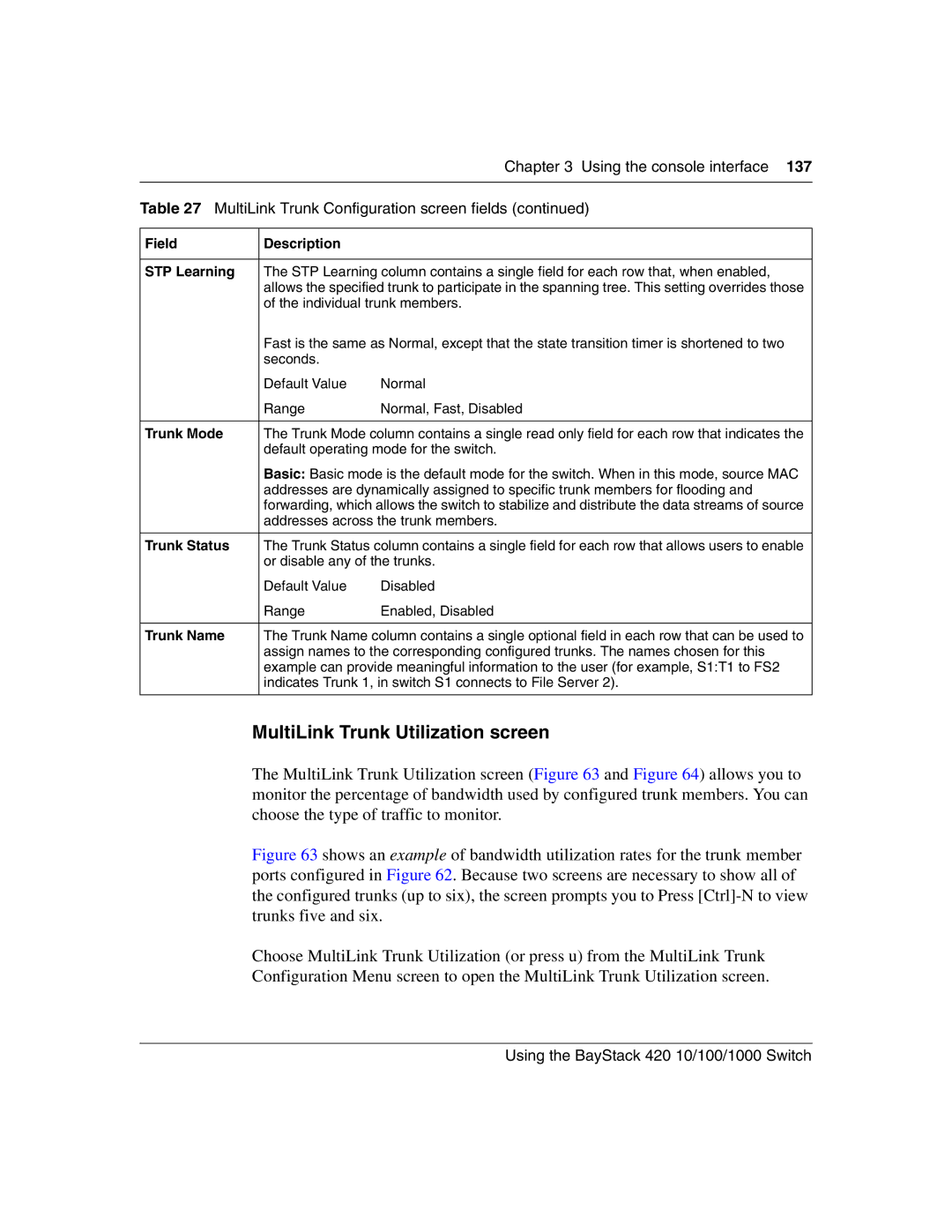|
| Chapter 3 Using the console interface 137 |
|
| |
Table 27 MultiLink Trunk Configuration screen fields (continued) | ||
|
|
|
Field | Description |
|
|
| |
STP Learning | The STP Learning column contains a single field for each row that, when enabled, | |
| allows the specified trunk to participate in the spanning tree. This setting overrides those | |
| of the individual trunk members. | |
| Fast is the same as Normal, except that the state transition timer is shortened to two | |
| seconds. |
|
| Default Value | Normal |
| Range | Normal, Fast, Disabled |
|
| |
Trunk Mode | The Trunk Mode column contains a single read only field for each row that indicates the | |
| default operating mode for the switch. | |
| Basic: Basic mode is the default mode for the switch. When in this mode, source MAC | |
| addresses are dynamically assigned to specific trunk members for flooding and | |
| forwarding, which allows the switch to stabilize and distribute the data streams of source | |
| addresses across the trunk members. | |
|
| |
Trunk Status | The Trunk Status column contains a single field for each row that allows users to enable | |
| or disable any of the trunks. | |
| Default Value | Disabled |
| Range | Enabled, Disabled |
|
| |
Trunk Name | The Trunk Name column contains a single optional field in each row that can be used to | |
| assign names to the corresponding configured trunks. The names chosen for this | |
| example can provide meaningful information to the user (for example, S1:T1 to FS2 | |
| indicates Trunk 1, in switch S1 connects to File Server 2). | |
|
|
|
MultiLink Trunk Utilization screen
The MultiLink Trunk Utilization screen (Figure 63 and Figure 64) allows you to monitor the percentage of bandwidth used by configured trunk members. You can choose the type of traffic to monitor.
